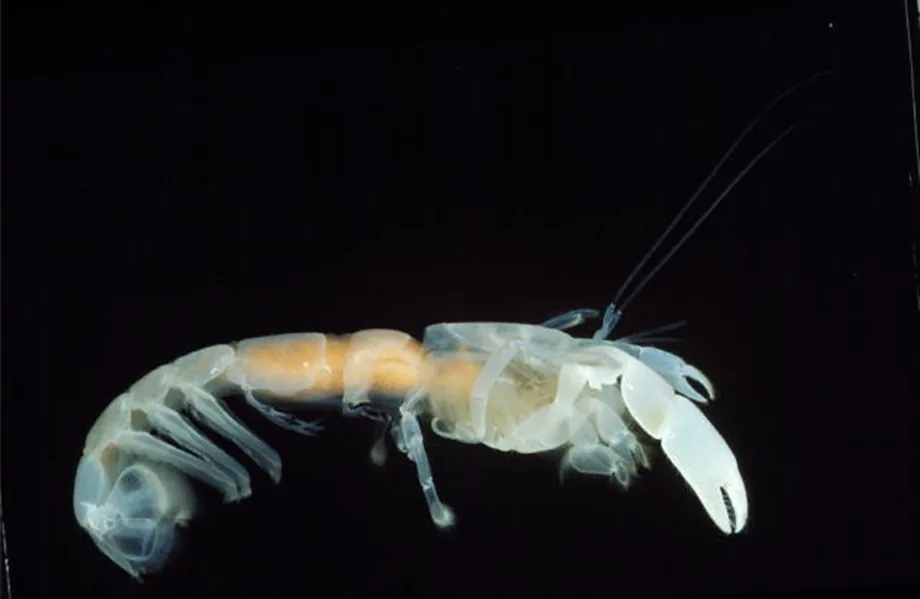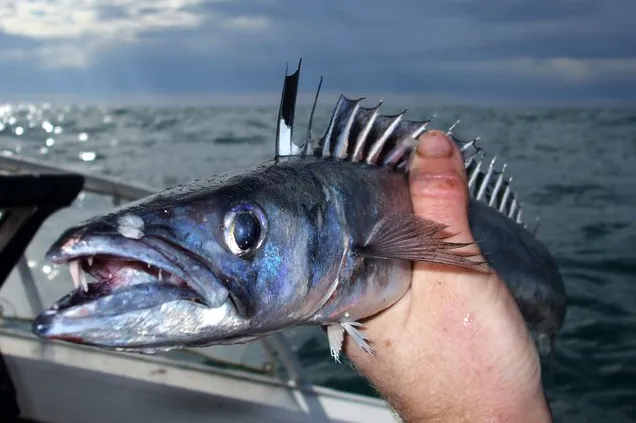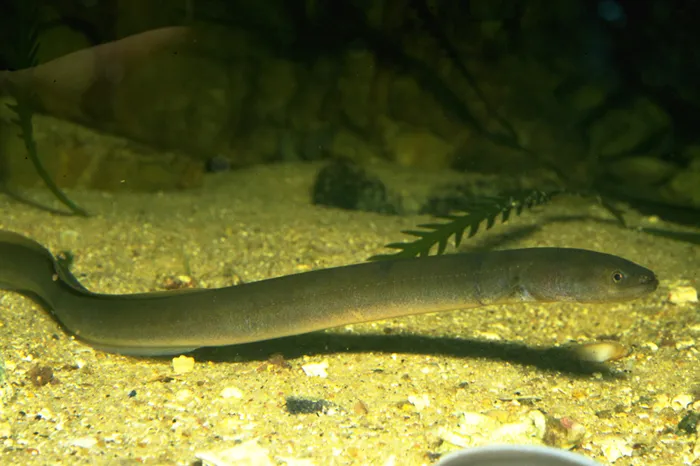
By Archer Hume
Burrowing Shrimp Fishing in Melbourne
Burrowing shrimp are small crustaceans that live in burrows in sandy or muddy substrates. They are popular as bait for fishing larger species.
Thu Sep 05 by: Archer Hume
Barracouta, also known as snoek, is a long, slender predatory fish found in southern Australian waters. It's known for its sharp teeth and aggressive feeding behavior.

Source: fishesofaustralia.net.au
Table of Contents
Barracouta (Thyrsites atun) is a pelagic species that inhabits temperate waters around southern Australia, including Victoria. These fish have a long, sleek body with a pointed snout and powerful jaws lined with sharp teeth. They typically grow to 60-100cm in length but can reach up to 2 meters.
Barracouta are known for their aggressive feeding behavior and are often found in schools, hunting smaller fish near the surface or in mid-water. They prefer cooler waters and are commonly found around offshore reefs, rocky headlands, and over sandy bottoms.
In Victoria, Barracouta can be caught year-round, with peak seasons typically in autumn and winter. They are often caught while fishing for other species like salmon or trevally. Barracouta are known for their strong fights when hooked, making them an exciting catch for anglers.
While some consider Barracouta a good eating fish, others find the flesh too oily. It’s often used as bait for larger species or smoked for consumption. When handling Barracouta, be cautious of their sharp teeth and spines along the dorsal fin.
Fishing for Barracouta in Victoria is subject to the following rules: There is no minimum legal size for Barracouta, allowing anglers to keep fish of any size. However, there is a bag limit of 20 Barracouta per person per day. Always check the latest Victorian Recreational Fishing Guide for any updates to these regulations. Remember to carry a valid fishing license when fishing in Victorian waters.
To catch Barracouta in Victoria, trolling and spinning are effective methods. Use metal lures, particularly those that mimic small baitfish. When trolling, maintain a speed of 4-7 knots. Casting metal lures from the shore or boat and retrieving quickly can also be productive. Barracouta often school near the surface, so watch for feeding activity. Use sturdy gear as these fish can bite through lighter lines. A wire trace is recommended to prevent bite-offs. Early mornings and late afternoons are often the best times to target Barracouta.
When it comes to fishing for Barracouta, your choice of bait or lure can greatly impact your success. Based on the preferred fishing methods for this species, you will have a bit more success with lures when fishing for Barracouta, but bait fishing is common too.
For the best chances of success, try using Pilchards as bait or fishing with a Soft Plastics. Remember to always check local regulations and adjust your fishing strategy based on the specific conditions and seasons in your fishing area.
Bait fishing for Barracouta offers a variety of options, but these four stand out as the most reliable choices:
For artificial lure enthusiasts, here are the 5 most effective options that have been proven to work wonders for Barracouta:
Anglers in Melbourne and Victoria have numerous opportunities to catch Barracouta. While we couldn't pinpoint specific hotspots, Barracouta can be found throughout Victoria. We recommend consulting local fishing authorities or experienced anglers for the most up-to-date information on prime fishing locations.
When planning your fishing trip for Barracouta, consider factors such as seasonality, local regulations, and recent fishing reports to increase your chances of success.
Yes, there is a bag limit for Barracouta in Victoria. The current bag limit is 20 fish per person per day. This means you can catch and keep up to 20 Barracouta in a single day of fishing.
There is no minimum size limit for Barracouta in Victoria. This means you can legally keep Barracouta of any size that you catch. However, it's always good practice to release very small fish to allow them to grow and reproduce.
Barracouta, also known as snoek, is a long, slender predatory fish found in southern Australian waters. It's known for its sharp teeth and aggressive feeding behavior.
When targeting Barracouta with artificial lures, anglers have found success with the following options: Soft Plastics, Hard Bodied Lures, and Metal Spoon Lures.
For those who prefer bait fishing, the top choices for Barracouta are: Pilchards, Squid, and Whitebait.
While Barracouta can be caught, there are currently no known specific locations for targeting them. Anglers may encounter them while fishing for other species in various water bodies around Melbourne.

Burrowing Shrimp Fishing in Melbourne
Burrowing shrimp are small crustaceans that live in burrows in sandy or muddy substrates. They are popular as bait for fishing larger species.

Short-Finned Eel Fishing in Melbourne
The short-finned eel is a native species found in Victorian waterways, characterized by its shorter dorsal fin compared to its long-finned cousin.